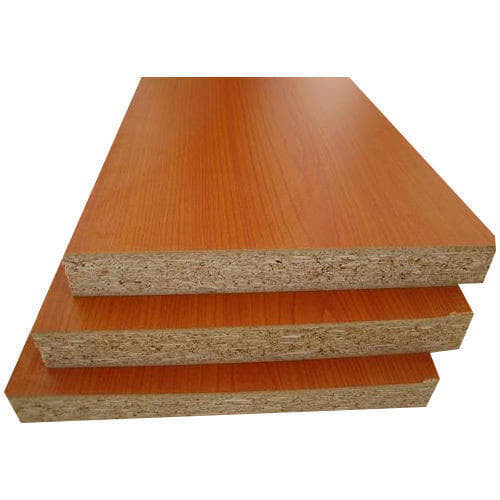Introduction
Chipboards, also known as particle boards, are engineered wood products made from wood chips, sawmill shavings, or sawdust combined with a resin binder. They are a versatile material widely used in the interior industry due to their affordability, ease of use, and versatility. This blog will explore what chipboards are, their properties, and their diverse applications within the interior design and construction sectors.

What Are Chipboards?
Chipboards are created by compressing wood particles with adhesives under high pressure and temperature. The process involves three main stages:
- Preparation: Wood particles or fibers are mixed with a binder (often a type of resin) to form a homogenous mixture.
- Forming: The mixture is spread onto a mat or board and compressed into panels using a hydraulic press.
- Finishing: The compressed panels are cured, cut to size, and sometimes coated or laminated to enhance their surface quality.
Properties of Chipboards
Cost-Effectiveness:
- Affordability: Chipboards are generally more affordable compared to other engineered wood products like plywood or MDF. Their cost-effective nature makes them a popular choice for budget-conscious projects.
Density and Strength:
- Variable Density: The density of chipboards can vary depending on the manufacturing process and the size of the wood particles used. Higher-density chipboards offer greater strength and stability.
- Moderate Strength: While not as strong as plywood or solid wood, chipboards provide adequate strength for many applications when used appropriately.
Surface Quality:
- Smoothness: Chipboards have a relatively smooth surface but may require finishing treatments for better aesthetics. They are often laminated or veneered to improve their appearance and durability.
Environmental Impact:
- Sustainability: Chipboards are considered environmentally friendly because they utilize wood residues and by-products that might otherwise go to waste. Many chipboards are also made with low-emission adhesives.
Applications of Chipboards in the Interior Industry
Furniture Manufacturing:
- Cabinets and Wardrobes: Chipboards are commonly used for constructing cabinets, wardrobes, and other furniture pieces. Their affordability and ease of machining make them ideal for mass-produced furniture.
- Tables and Desks: They are also used in the production of tables, desks, and shelving units, where cost savings are significant, and durability meets functional needs.
Interior Wall Panels:
- Paneling: Chipboards can be used as base material for wall paneling systems, providing a stable backing for decorative finishes such as veneers or laminates.
- Partition Walls: In commercial settings, chipboards are used in partition walls to create flexible and reconfigurable spaces.
Flooring:
- Subflooring: Chipboards are often used as subflooring material in residential and commercial buildings. They provide a smooth, stable surface for finishing floors like hardwood, laminate, or carpet.
- Underlayment: In some cases, chipboards are used as an underlayment for other types of flooring, adding insulation and soundproofing properties.
Cabinetry and Millwork:
- Custom Millwork: In both residential and commercial settings, chipboards are used for custom millwork applications, including built-in shelving, entertainment units, and storage solutions.
- Kitchens and Bathrooms: Chipboards are frequently used in kitchen and bathroom cabinetry due to their ability to be easily shaped and finished with water-resistant coatings or laminates.
Doors and Panels:
- Interior Doors: Chipboards are used in the core of many interior doors, providing a lightweight but sturdy base that can be finished with various veneers or laminates.
- Decorative Panels: They are also used in decorative wall panels, often covered with high-quality veneers or finishes to enhance their appearance.
Decorative Applications:
- Wall Partitions: In office interiors, chipboards are used to create wall partitions and cubicles, providing privacy and a clean, finished look.
- Decorative Surfaces: They can be covered with decorative laminates or veneers to create aesthetically pleasing surfaces for a variety of applications.
Advantages and Disadvantages of Chipboards
Advantages:
- Cost-Effective: Chipboards are generally less expensive than plywood and solid wood, making them a budget-friendly choice.
- Versatility: They can be easily cut, shaped, and finished, allowing for a wide range of design possibilities.
- Sustainability: Utilizes wood residues and is often produced with environmentally friendly practices.
Disadvantages:
- Lower Strength: Compared to plywood and MDF, chipboards have lower strength and may be less durable under heavy loads or high-impact conditions.
- Moisture Sensitivity: Chipboards are susceptible to moisture damage and can swell or degrade if exposed to water, although moisture-resistant variants are available.
- Surface Finish: The surface of chipboards may require additional finishing to achieve a smooth, high-quality appearance.
Conclusion
Chipboards are a versatile and cost-effective material widely used in the interior industry. Their affordability, ease of use, and range of applications make them a popular choice for furniture manufacturing, wall paneling, flooring, and more. While they have some limitations, such as lower strength and moisture sensitivity, their benefits often outweigh the drawbacks for many applications.
For any project requiring budget-friendly materials that provide solid performance, chipboards offer a practical solution. Whether you're outfitting a new office, updating a kitchen, or creating custom furniture, chipboards can help achieve a functional and attractive result.






